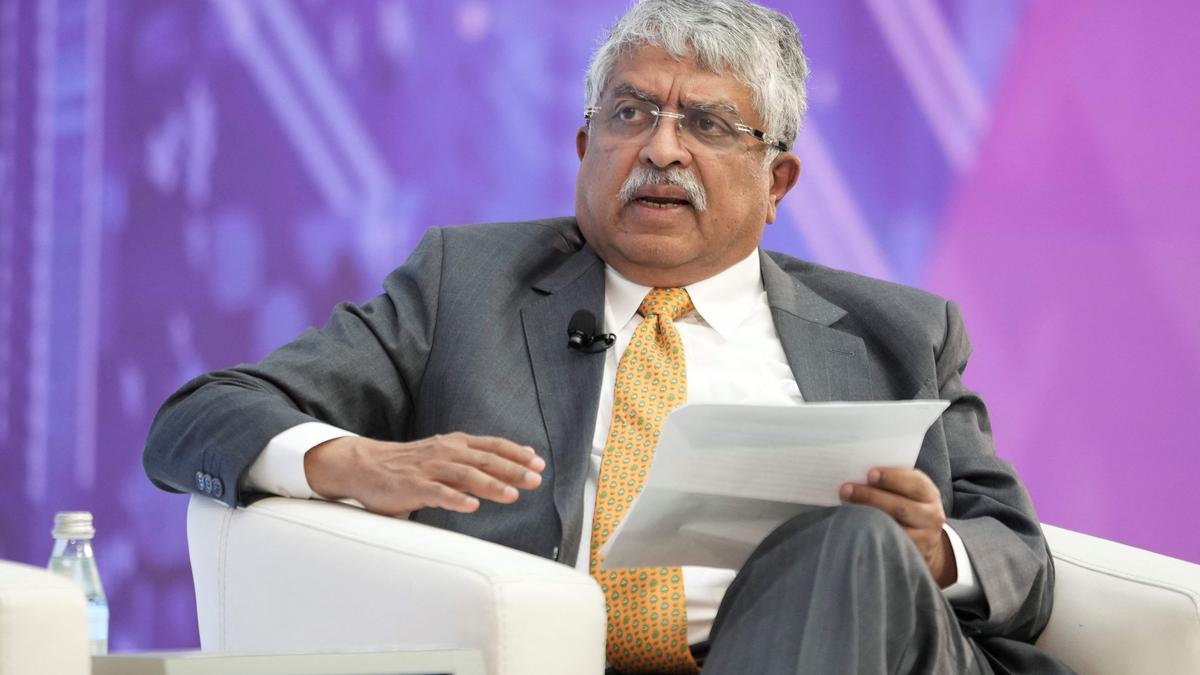Nandan Nilekani
| Photo Credit:
Multiple trends were colliding, in the global markets, and that led Infosys to reexamine the fundamentals of its businesses, said Nandan M. Nilekani, Chairman, Infosys.
“As we contemplate the developments of the last few months, we know we are in an era of uncertainty that we have never seen before. Multiple trends are colliding and leading us to reexamine the fundamentals of our businesses,” he wrote to shareholders in the company’s annual report FY’25.
He said, “As geopolitics becomes front and centre in our lives, we are having to take cognizance of the world not as one single global market but as fragmented blocs and countries. This means making strategic choices and even navigating between these blocs.”
According to Mr. Nilekani, COVID brought into focus the critical and pressing need to de-risk the supply chain and build viable alternatives. “It was no longer enough to deliver just-in-time; we had to also factor in for just-in-case,” he told shareholders.
He further said, now tariffs were further driving home the point that the company has to diversify its sourcing. “Tariffs will be differentiated across products and countries and will likely keep changing. Bilateral and regional rules of trade will dominate. Supply chains will continue to shift as tariffs become another form of arbitrage,” he pointed out.
Uncertainty with AI
On AI, he wrote, its advent with all its possibilities and potential created another arc of uncertainty. As enterprises looked at applying AI to every aspect of the business, some long standing challenges would become imperative and self-evident to firms. For example, the need to modernise legacy systems, and the need to create data architecture so that all the firm’s data would become consumable by AI, in a holistic manner, could no longer be put off, he elaborated.
“Firms will need to have an AI foundry for rapid innovation and an AI factory to scale successful innovations across the enterprise. While embracing AI will bring a goldmine of opportunities, it will not be entirely without some foreseeable risks,” he further wrote. Mr. Nilekani also stated that regulatory variances across regions would need to be incorporated into one’s strategy. “The early learnings from enterprise AI adoption gives us a glimpse of these potential challenges that lie on the path ahead,” he said.
Moving on changes in Earth’s climate system, he cautioned, climatic change and the associated energy transition added to the crucible of uncertainties. So much of the future depended on innovation and the form of energy that would fuel us forward – solar, wind, batteries, pumped hydro, green hydrogen, nuclear, carbon capture and storage, etc, he added.
“Global climate deals will set the pace of change. The only thing certain is that electricity will play a much bigger role in the days ahead. And the pace of its rollout will be contingent on building new transmission lines, setting up charging stations, and acquiring more transformers.”
However, he added, this transformation would naturally be constrained by regulatory cholesterol. The price of various commodities will rise, and fall based on the speed of transition. And many assets could well be stranded.
There was not a sector that remained unscathed as rapid business and technological disruption forced businesses to adapt and advance, he said, adding every business vertical was facing challenges of various kinds. Car makers were dealing with the transition from ICE engines to batteries. Pharma companies were looking at accelerating the pace of drug discovery with AI.
Logistics companies were dealing with the complete reordering of global supply chains. Financial service companies were considering the tokenization of their assets. Energy companies were assessing the long-term demand for their products. Utilities were facing a distributed future. Manufacturing companies are navigating the advent of robots and 3D printing. Service companies were dealing with AI agents performing their tasks, Mr. Nilekani wrote.
Published – June 03, 2025 10:08 pm IST
